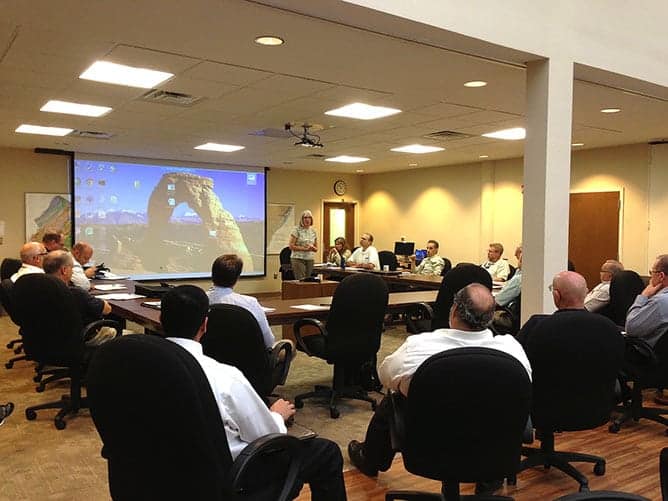DRBC committee hears presentations on flood preparedness, management
FLOODS AND THEIR PREVENTION is the main focus of the Delaware River Basin Commission’s Flood Advisory Committee. At its meetings, held quarterly, a veritable brains trust gets together either in person or via conference call to share information. Members are from federal organizations such as the United States Geological Survey, the Federal Emergency Management Agency, the National Weather Service, the National Parks Service and the Natural Resources Conservation Service. In addition, there are people from the four-state watershed (and New York City), including academics and professionals in various state agencies, as well as members from business and industry and the U.S. Army Corps of Engineers.
The most recent meeting was held on Sept. 7, 2016, at the USGS New Jersey Water Science Center in Lawrenceville, N.J.
To bring the topics discussed at this meeting available to a wider audience, I've asked presenters at this meeting to give a brief overview of their presentation.
First up, Anni Shelton, grants program specialist for FEMA Region II, gave abrief overview of how FEMA is encouraging applicants to utilize nature-based infrastructure strategies in Hazard Mitigation Assistanceproject proposals. She wrote:
FEMA provides funding for hazard mitigation projects through three Hazard Mitigation Assistance (HMA) grant programs: Hazard Mitigation Grant Program, Flood Mitigation Assistance and Pre-Disaster Mitigation. Eligible applicants include any State agency, local government, Indian tribal government or eligible nonprofit organization that submit an application for assistance under the Hazard Mitigation Assistance program.
In 2013, FEMA introduced an environmental benefits policy to enable applicants to incorporate ecosystem benefits into their project’s Benefit-Cost Analysis (BCA). Any project that demonstrates a benefit-cost ratio of .75 or greater is eligible to incorporate environmental benefits into the analysis to increase the cost-effectiveness of the project. Initially, this policy was only applicable to acquisition and open-space project types. However, in 2015, FEMA released four new project types referred to as Climate Resilient Mitigation Activities (CRMA), which can help communities reduce risks associated with climate change. These activities include: Aquifer Storage and Recovery, Floodplain and Stream Restoration, Flood Diversion and Storage, and Green Infrastructure Methods. This year FEMA released fact sheets, job aids, BCA tools and an ecosystem services benefits calculator to help applicants design project proposals.
Learn more about CRMA here, and learn more about HMA programs here.
The next presenter was Kunal Patel, a principal engineer in the NJ State NFIP Coordinator's Office, Office of Dam Safety & Flood Control, New Jersey Department of Environmental Protection. His presentation was on Non-Regulatory Flood Insurance Products for the NJ Delaware Bay Area.
He wrote:
We are currently finalizing the non-regulatory project for Delaware bay counties. The final products for coastal areas of Cumberland, Salem, Gloucester, and Camden counties will be available soon.
More on draft products on be found here.
Non-regulatory means that they are not intended to be used as the basis for official actions required under the NFIP (such as mandatory insurance purchase requirement, construction requirements, etc). Please see FEMA's website for details.
And lastly, Laura Bittner, the chief of the Hydrology, Hydraulics and Coastal Section of the U.S. Army Corps of Engineers in the Philadelphia Region, spoke about USACE's Corps Water Management System (CWMS). Below are excerpts from the fact sheet about the project.

